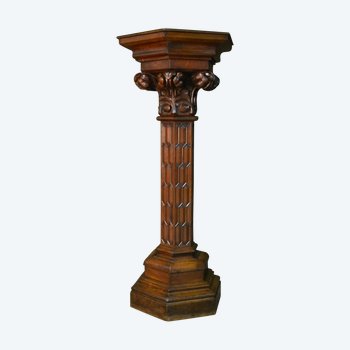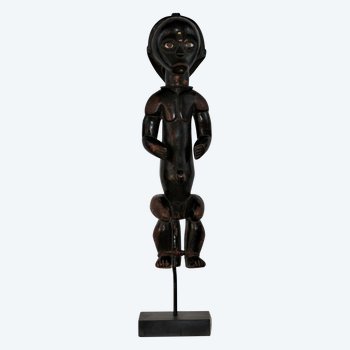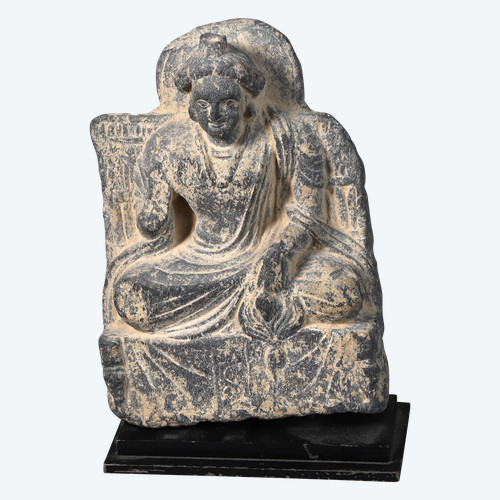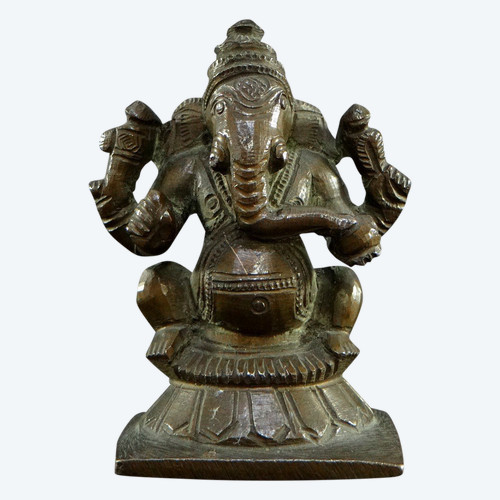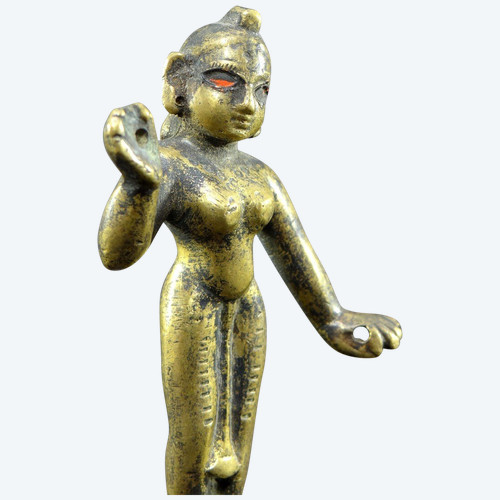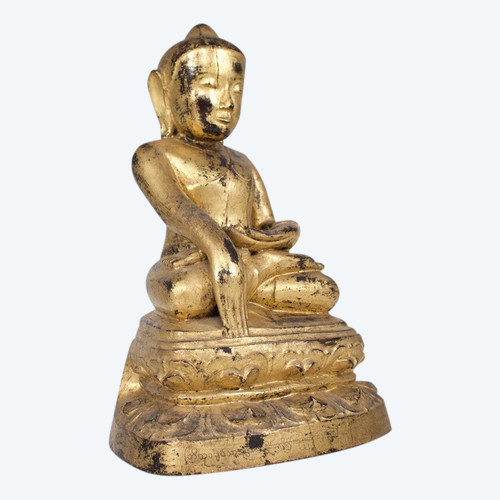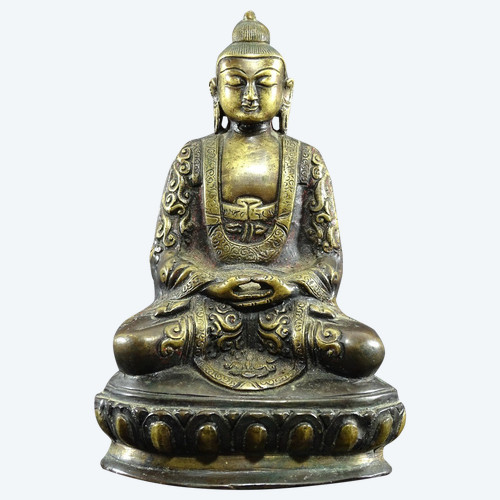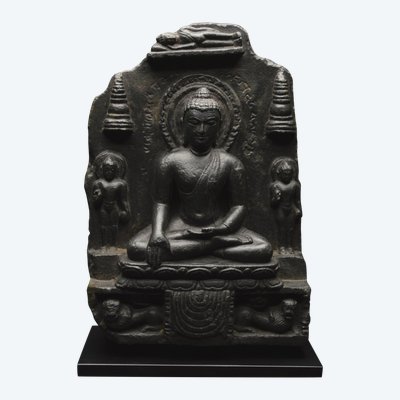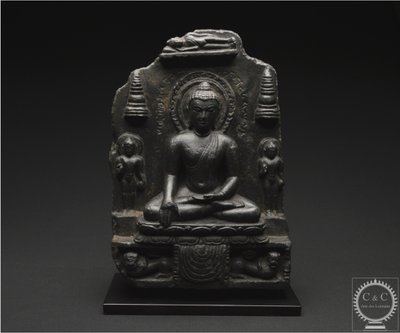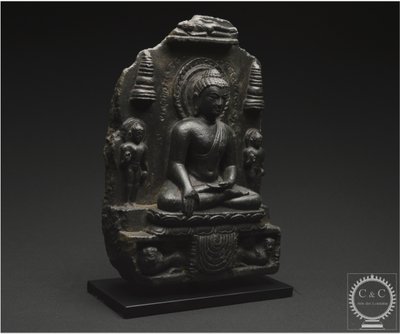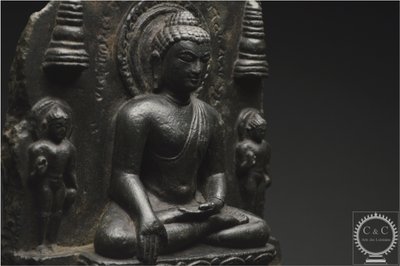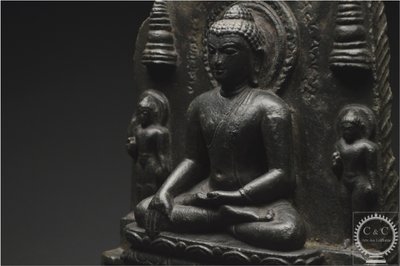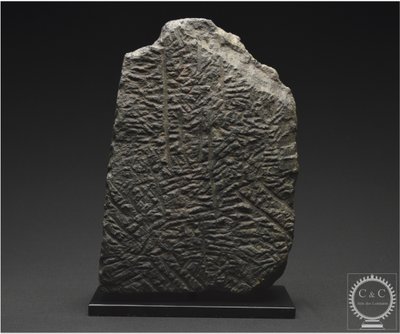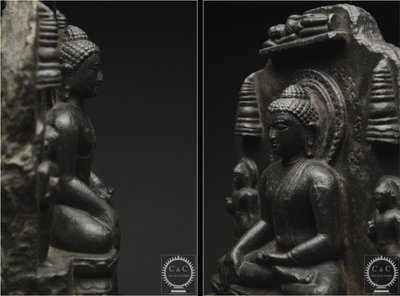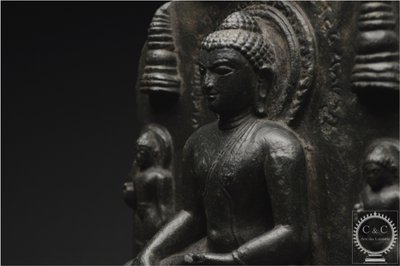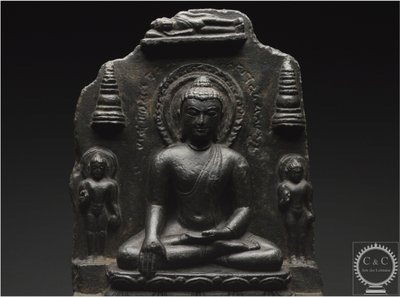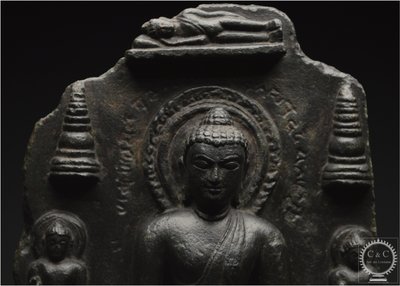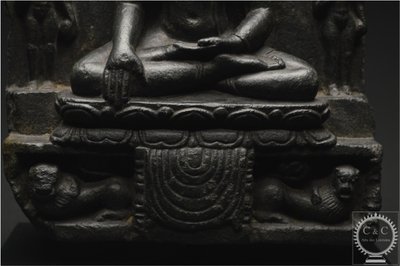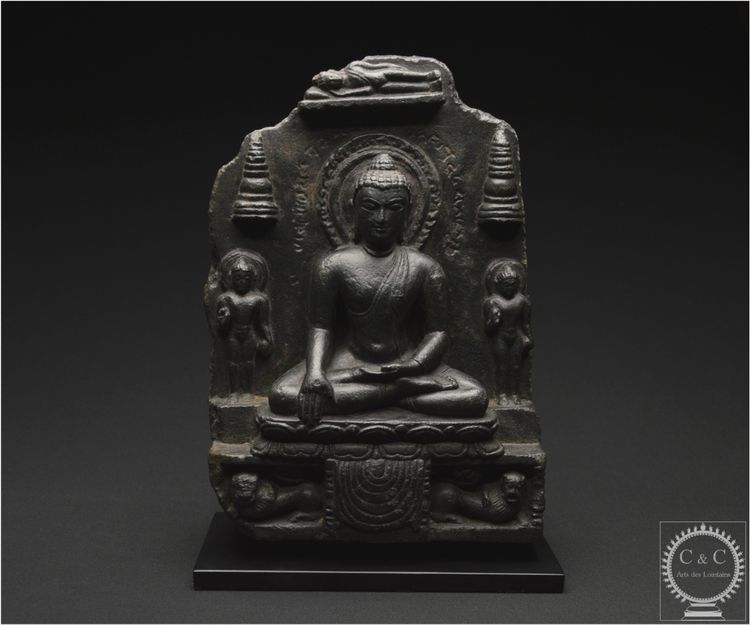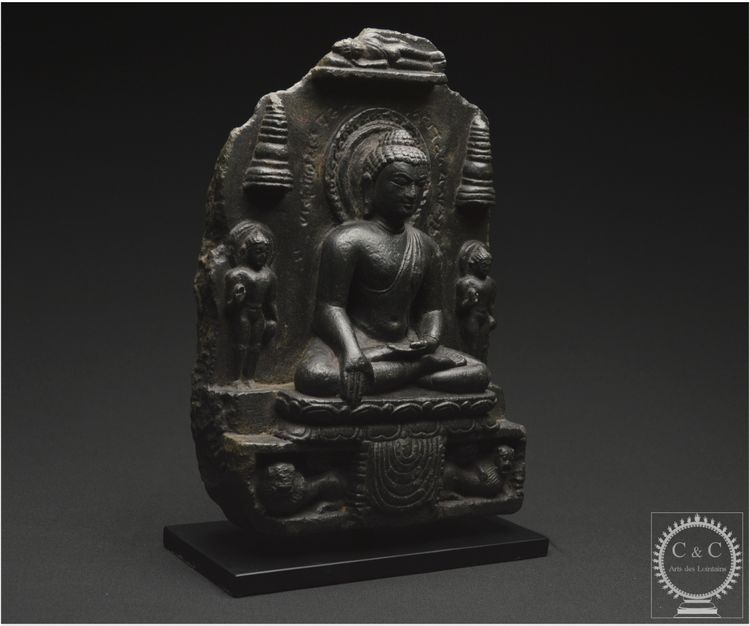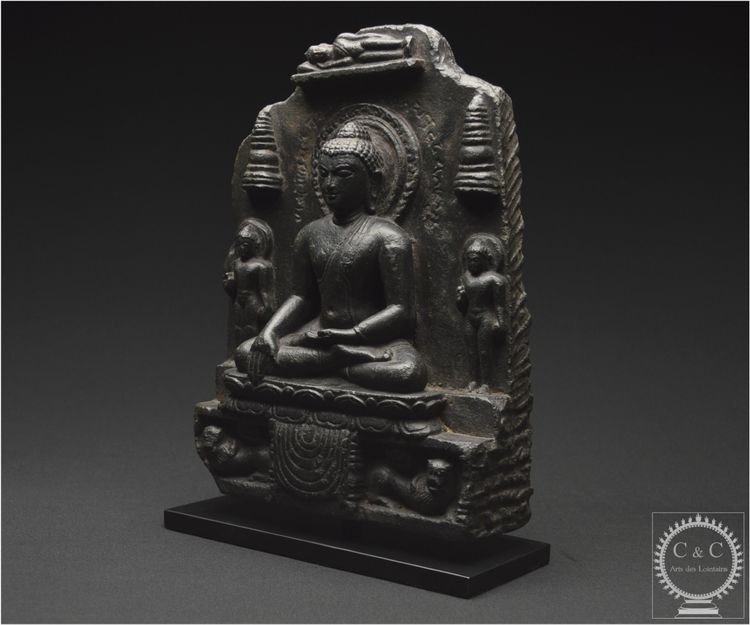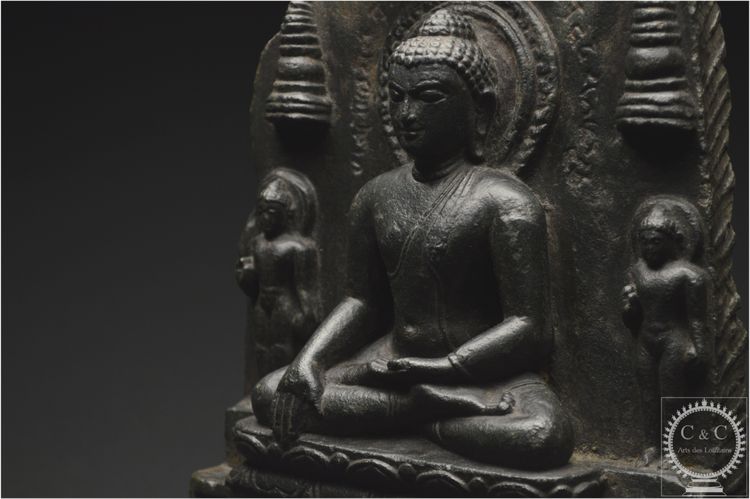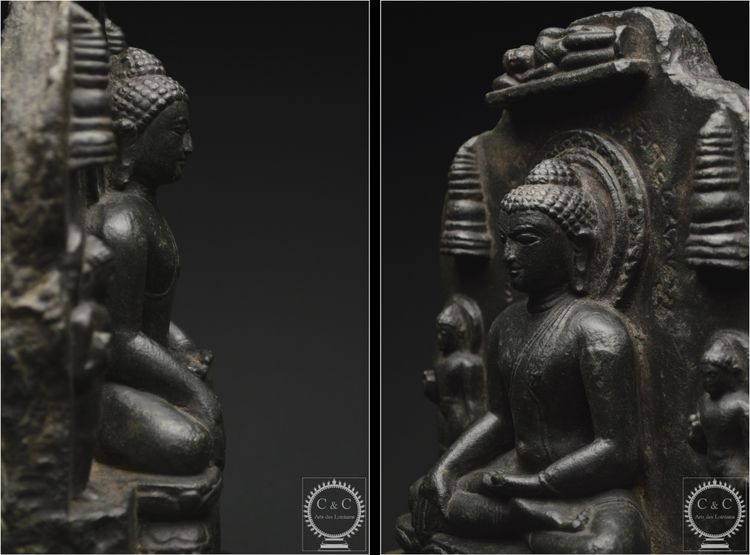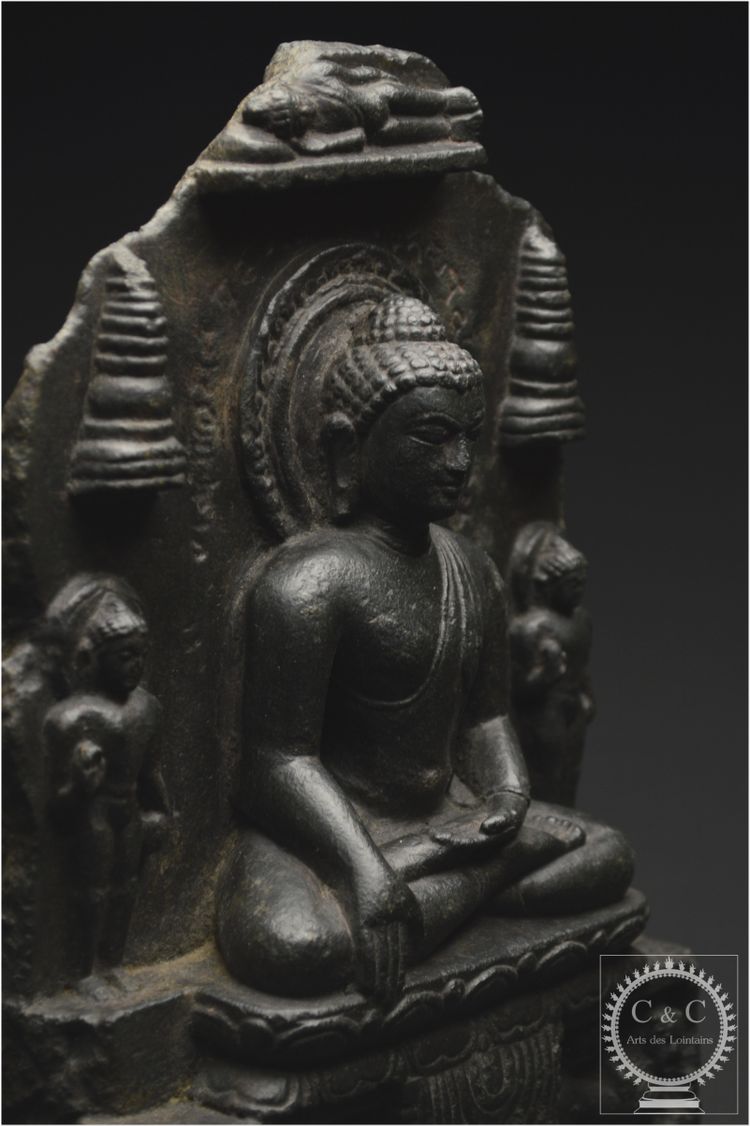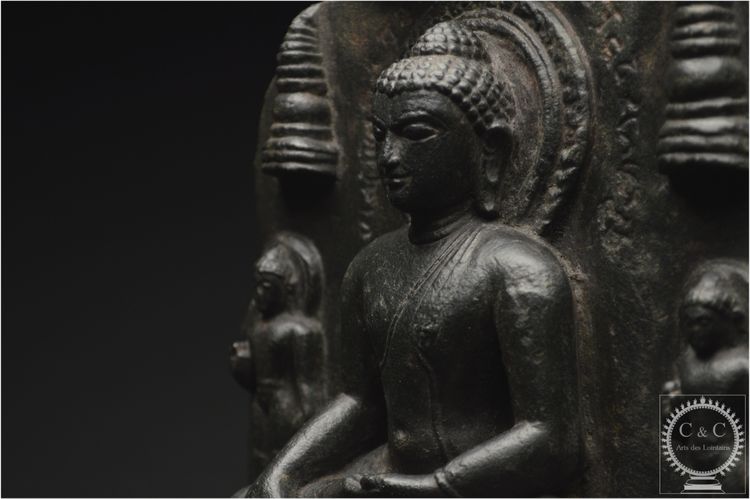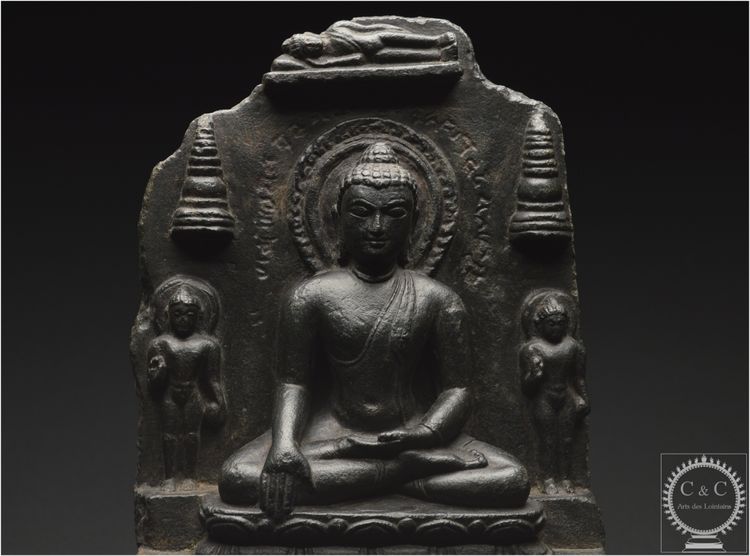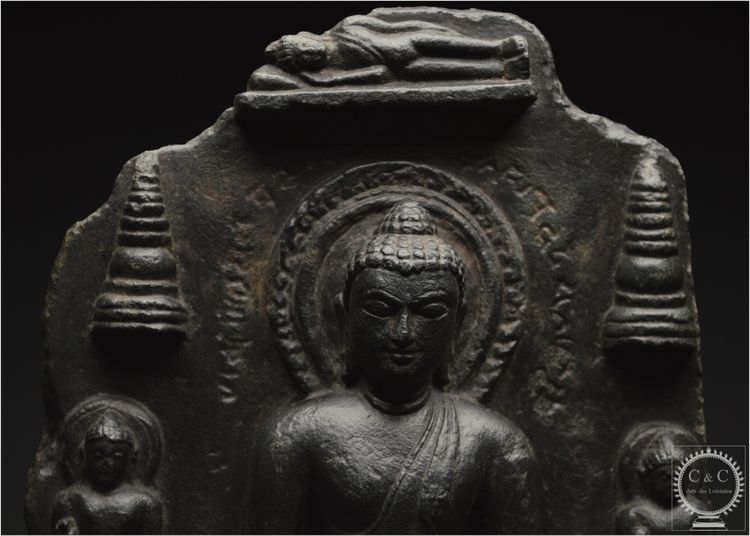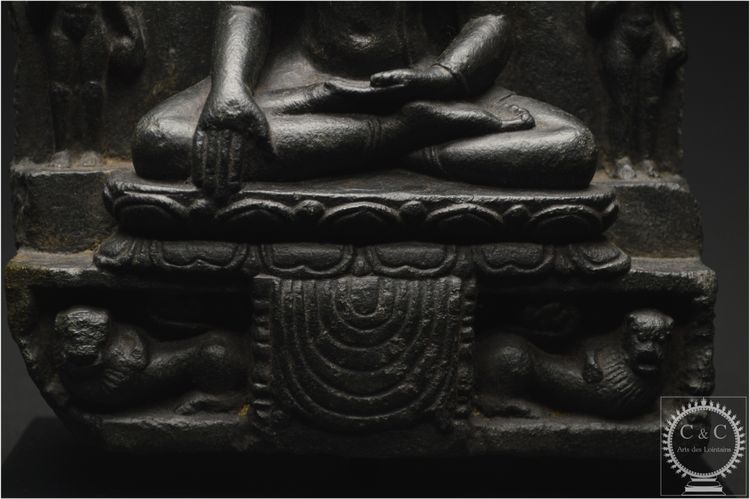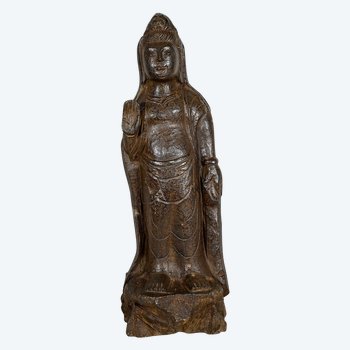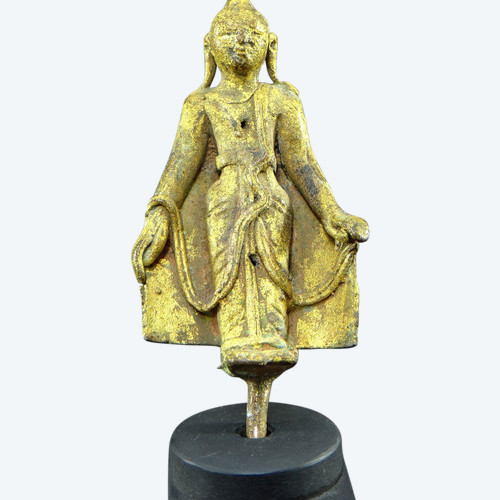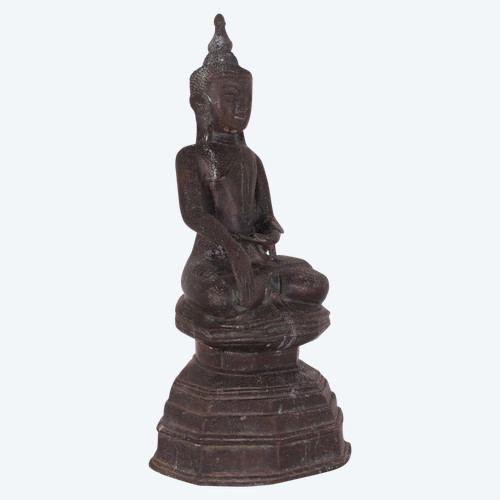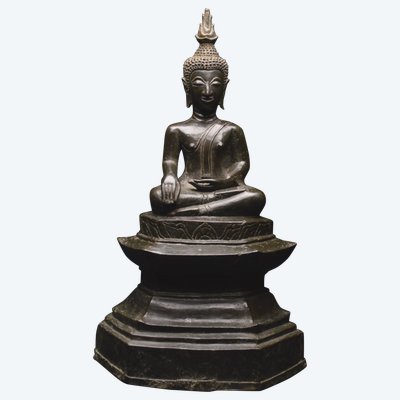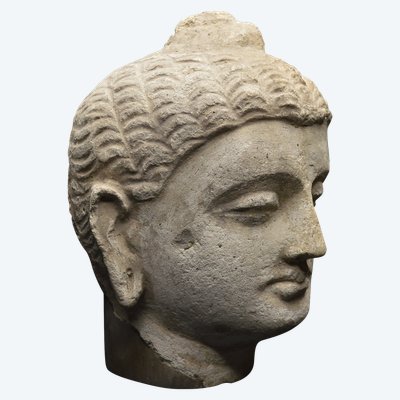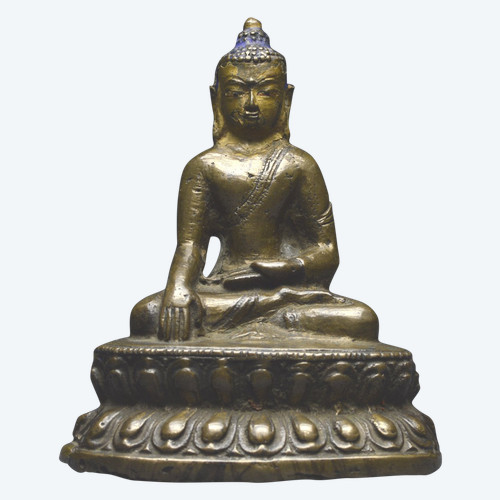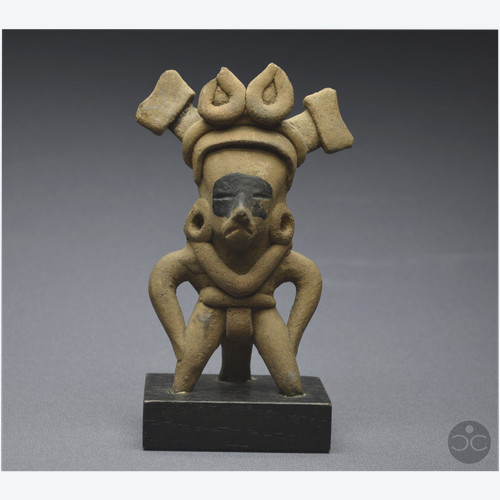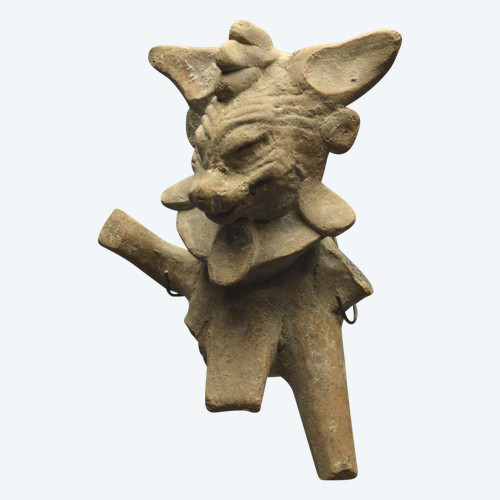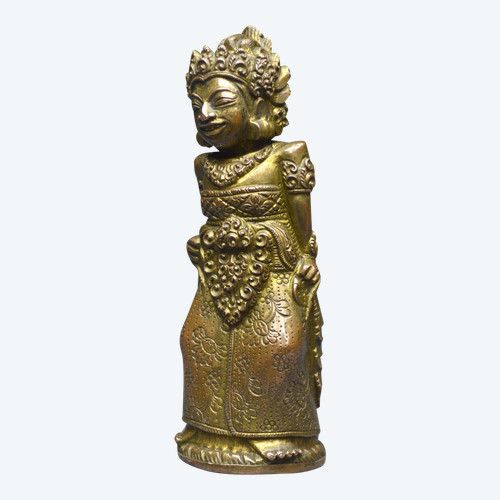This description has been translated and may not be completely accurate. Click here to see the original
Fragment of a stone stele depicting Sākyamuni Buddha
Eastern India , Bihār - Bengal
Pāla-Sena dynasty / 10th - 12th century
The Buddha is depicted seated, cross-legged in lotus position (vajraparyanka) on a base with a double row of inverted lotus petals. The right hand is resting on the knee in the bumisparsha mudra position (taking the Earth as witness), fingers pointing to the ground and the left hand placed in his lap, palm facing the sky. The Awakened One is dressed in samgathi and uttarasangha, with the chest and right shoulder uncovered and the left shoulder draped over the torso, the latter finely worked to reveal thin hems. The Awakened One's body is massive, with broad shoulders and powerful limbs, a chest swollen with the breath of meditation, and a protruding navel above a slightly protruding lower abdomen.
The face is characterized by curvilinear superciliary arches meeting at the base of a fine, blunt nose, lenticular eyes and a small, thin-lipped mouth that smiles in an attitude of profound inwardness. The neck is adorned with the traditional three folds of beauty, the hairstyle treated with small picots, the latter surmounted by the usnisa, the ears with long, distended lobes symbolizing the Buddha's royal origin. The Blessed One is adorned with a large flamed nimbus around which is engraved an inscription in Siddhamātrikā, perhaps a dedication from a donor or an evocation of the Buddha.
Two standing bodhisattvas take their places on either side of the Enlightened One, left arm pressed against the body, right arm in abbaya mudra position (absence of fear), both wearing a halo. The upper register consists of two stupas that can be interpreted as an allegory of nirvāna, while the upper part of the stele depicts the Buddha in the Mahāparinirvāṇa (Total Extinction) position. The Enlightened One, adorned in the monastic habit, lies on his right side, his head resting on his right hand, the latter resting on a cushion.
The quadrangular lower register is embellished with two lions on either side (the lion being traditionally associated with the Sākya clan and with the Buddha himself), the body presented in profile, the curled tail forming a volute, the head in front, roaring mouth and teeming mane. The center of the scene evokes a cloth.
Pāla-Sena art spans a period of four centuries (approximately 800 to 1200 CE) and is the heir to the Gupta and post-Gupta school of the Ganges valley, and more specifically that of Sārnāth. Of the great art of the Gupta and post-Gupta, who had created an admirable aesthetic and narrative repertoire, Pāla art was only devoted to its iconography: images in bronze or stone and, exceptionally, bas-reliefs. Early productions reveal a certain elegance and balance, as well as a pronounced taste for the representation of ornamentation. Over the course of the 10th century, iconography became more diversified, with figures becoming progressively longer and more refined, less jewelry and thicker, more accentuated facial features.
Hard stone
Visible wear, accidents and missing parts
25.6 x 18 cm excluding base
Private European collection
Contact us: culturesetcivilisations@orange.fr
Ref: SOA3W9BBO1
 Gothic style oak column
850 € EUR
Gothic style oak column
850 € EUR
 Napoleon marble inkwell, 19th century
450 € EUR
Napoleon marble inkwell, 19th century
450 € EUR

